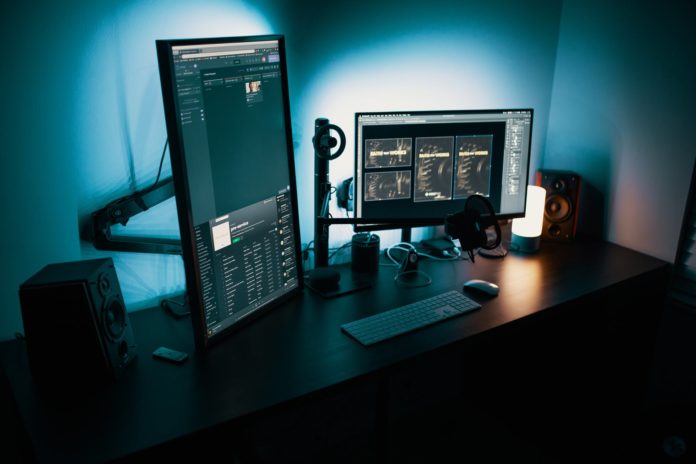By Amit Kumar Jain/Surbhi Jain
The recent defiant spread of Covid-19 has spurred many jokes and memes on the Internet. But the one which shows us the harsh reality is the hidden message alongside the content. Mankind harps on how its superior brain power has led to advancements in technology connecting people around the world (even in space). The novel coronavirus is subjecting this claim to a rigorous test, as increasing connectivity is proving a boon to its spread.
Covid-19 first appeared in China in January 2020, and has now spread over 195 countries with around four lakh reported cases and nearly 17,000 deaths. It has virtually ‘locked down’ the world. Despite the advances that mankind has achieved in medical science, the only potent measure against the virus as of now is social isolation and social distancing.
Nevertheless, after initial setbacks, mankind is putting up a brave fight and is using new-age technologies to restore some sanity. These technologies are not only helping fight the current health pandemic but will, in the future, change how we deal with recurrence of such health scares.
Some of the technological solutions that are adopted or can be adopted by various countries are:
Work from home: Alibaba and Baidu instructed their employees in China to work from home after the Lunar New Year (January 25). Since the wife of Canadian Prime Minister tested positive for coronavirus, he is under self-quarantine and undertaking tele-governance to perform his administrative responsibilities.
Today, you only need a laptop and a good Internet connection to access your office server, work on your project and deliver the desired outcomes. One can use online services like TeamViewer for remote access, desktop sharing, online meetings, web conferencing and file transfer between computers. Working from home is the future, as it will help to save costly office space, reduce transport expenditures and increase employee productivity.
Video conferencing: Apps like Zoom and Skype shall be used for any meeting to avoid close gatherings at one place. These apps may be uploaded on desktops/laptops/mobile phones of the employees.
Robotics: Robots may be deployed to take care of patients in isolation wards by serving them food, medicines etc. In China, a robot named Little Peanut transports food to patients quarantined in a hotel. In one Chinese hospital, patients hand over trash and bedsheets to robots. In the US, one patient in the state of Washington is being treated by a robot named Vici, through which he communicates with his care team. Chatbots are being used to keep travellers updated on the latest travel procedures and disruptions.
Tele-medicine: This technology is being used by large hospitals across the US to safely screen and treat patients from remote places. The Rush University Medical Center in Chicago recently set up a virtual medical line to help screen patients for coronavirus.
Autonomous vehicles and drones: These are being used to deliver essential goods like medicines and foodstuffs. China’s largest private courier, SF Express, is useing them to transport medical supplies to Wuhan Jinyintan Hospital in China’s Hubei province. Drones are also being used to patrol public spaces, track non-compliance to quarantine mandates and for thermal imaging.
Apollo, Baidu’s autonomous vehicle platform, has joined hands with self-driving start-up Neolix to deliver supplies and food to a big hospital in Beijing. It has made its micro-car kits and autonomous driving cloud services available for free to companies fighting the virus.
Virtual biometrics: Facial and iris recognition solutions integrated with infra-red thermometers are increasingly being used for screening. The government and many private companies in India have suspended contact-based biometric time and attendance systems. These can also be used to track the movement of suspected infected persons and to quarantine them.
Artificial intelligence: AI is lending a hand in diagnosing and developing a cure for the illness. Several hospitals in China are using AI-based software from the company Infervision to scan through CT images of patients’ lungs to look for signs of infection. The cloud computing resources and supercomputers of several major tech companies such as Tencent, DiDi, and Huawei are being used to fast-track the development of a cure or vaccine for the virus. Several drug companies are using AI-powered drug discovery platforms or are mining through databases of already-approved drugs (for other illnesses) to find a cure.
Contactless working: To avoid physical contact, paperless working is being encouraged in offices. The apex bank in India has advocated digital transactions over physical exchange of currency to prevent spread of the virus. Delhi Metro has recommended use of contactless metro cards for travelling.
In these challenging times, it is for sure that technology, AI and data science are critical in helping us effectively deal with the outbreak. Let us take it as a hidden opportunity to evolve technology to brace newer challenges.
Amit is with the Ministry of Railways and Surbhi is with the Finance Ministry. Views are personal



















